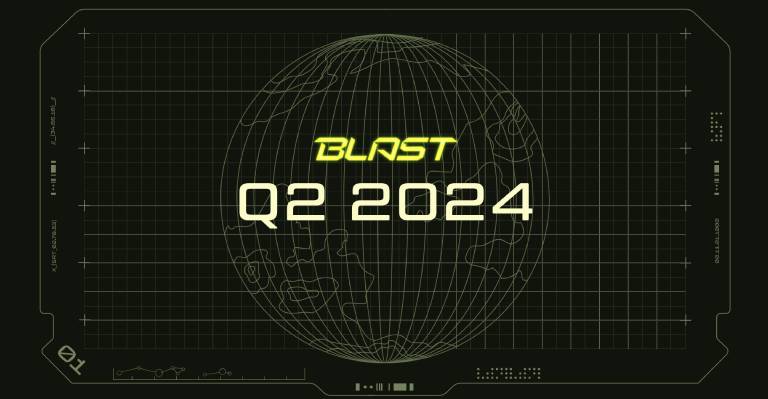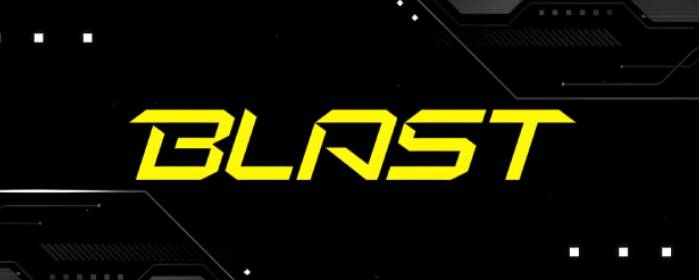TL;DR
- Ethereum’s Layer 2 network Blast will launch its native token and airdrop 17% of its supply.
- Blast is the 6th largest blockchain with $1.65 billion in TVL and offers native returns on ETH and USDB.
- Despite its strong metrics, Blast is a controversial topic in the DeFi community.
Ethereum‘s Layer 2 network, known as Blast, is set to launch its native token, BLAST, with an airdrop scheduled for tomorrow, June 26, at 10AM EST.
This airdrop will distribute 17% of the total BLAST supply to early adopters and community participants.
IT’S TIME FOR $BLAST
The Blast Foundation will airdrop BLAST to the community tomorrow, June 26 at 10AM EST, 10PM HKT, 4PM CET.
Q2 highlights and tokenomics below 👇 pic.twitter.com/iH1SxCQ6uN
— Blast (@Blast_L2) June 25, 2024
The distribution will be divided into three parts: 7% for Blast points, 7% for Blast gold and 3% for the Blur ecosystem.
This strategy seeks to reward loyal users and encourage adoption of the token within the DeFi ecosystem.
Blast has emerged as the sixth largest blockchain, with a total of $1.65 billion in value locked (TVL).
This metric positions it as the second largest Ethereum scaling solution by TVL, according to data from DeFiLlama.
Additionally, Blast is distinguished by its user fees, which are the highest among Layer 2 solutions, and by offering native returns on ETH and USDB, providing additional incentive for users to keep their assets on-chain.
Specifically, users can earn a 4% return on ETH and 5% on USDB, its native stablecoin, without needing to interact directly with DeFi protocols.
Despite these impressive metrics, Blast has generated controversy in the cryptocurrency community.
Many market participants are skeptical about the token’s expected valuatio, especially after disappointing airdrops from other projects such as ZkSync and LayerZero.
Some predict that on-chain activity will decline significantly after the airdrop, raising questions about Blast’s long-term sustainability.
Additionally, Blast is developed by the same team behind the NFT platform Blur, which has come under fire within the NFT collecting community.
Blur displaced OpenSea as the dominant NFT trading platform following its token launch in 2023, but its incentives for buying, selling and lending have been criticized by many.
In the latest Blur farming season, Blast incentives were included, with a distribution of 0.5% of Blast supply to Blur traders and 1.5% to BLUR stakers.
This small allocation has led to significant losses for Blur’s major liquidity providers, highlighting the volatility and risks associated with these incentives.
Impact and Future of Blast
The distribution of Blast tokens not only has implications for the adoption and use of the platform, but also for its perception within the crypto community.
Requiring 0.1% of eligible wallets to airdrop linearly for six months is a measure intended to prevent immediate sell-offs and promote more sustained adoption of the token.
However, it remains to be seen whether this strategy will be enough to maintain interest and activity on the platform after the initial distribution.
The controversy surrounding the platform is also due in part to its connection to Blur.
While Blur has achieved great success in becoming the leading platform for NFT trading, criticism over its incentives has led some to question the practices of the team behind both projects.
The recent crash of the BLUR token, which has fallen nearly 70% from its all-time high in February, has exacerbated these concerns.
For Blast, the challenge will be to prove that it can maintain and grow its TVL and user metrics over the long term, especially after the initial incentives wear off.
Blast’s ability to offer attractive returns on ETH and USDB is a plus, but the sustainability of these returns will depend on external factors such as the broader cryptocurrency market and the competitiveness of other Layer 2 solutions.
The combination of strong on-chain metrics, native returns, and past controversies creates an interesting scenario to evaluate Blast’s future in the competitive DeFi space.


